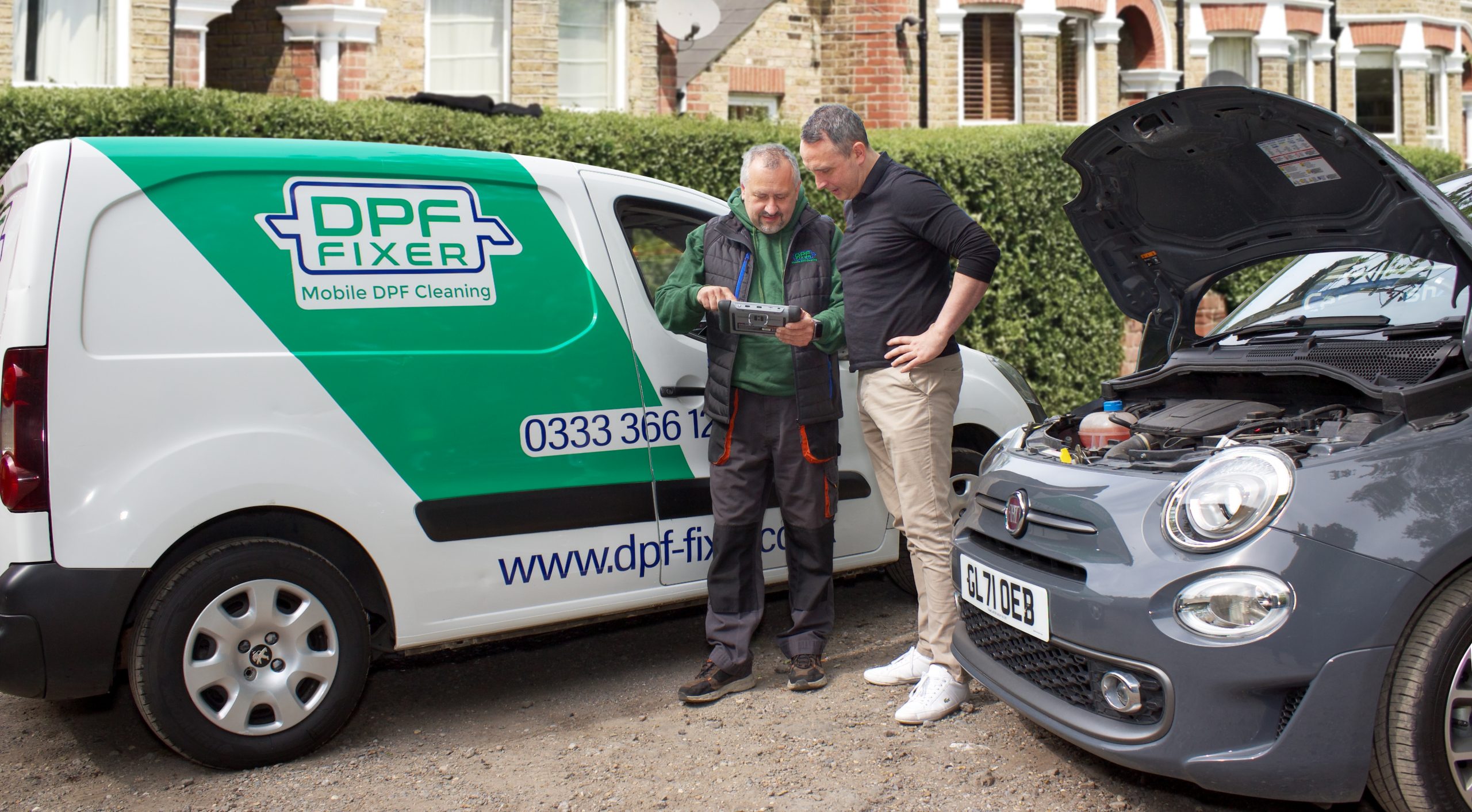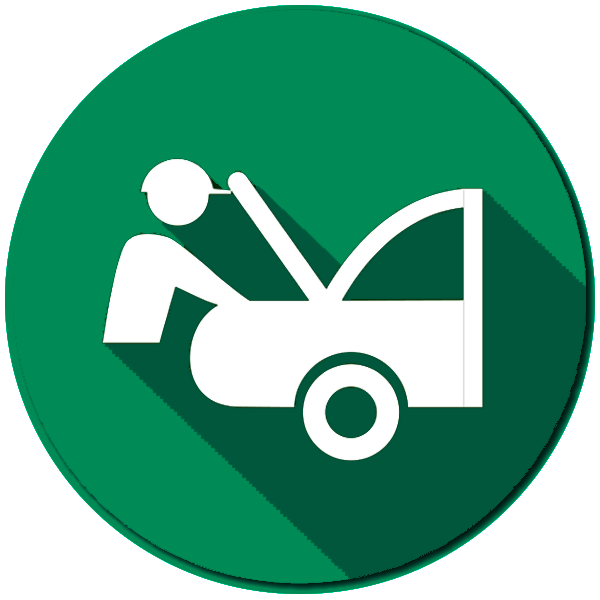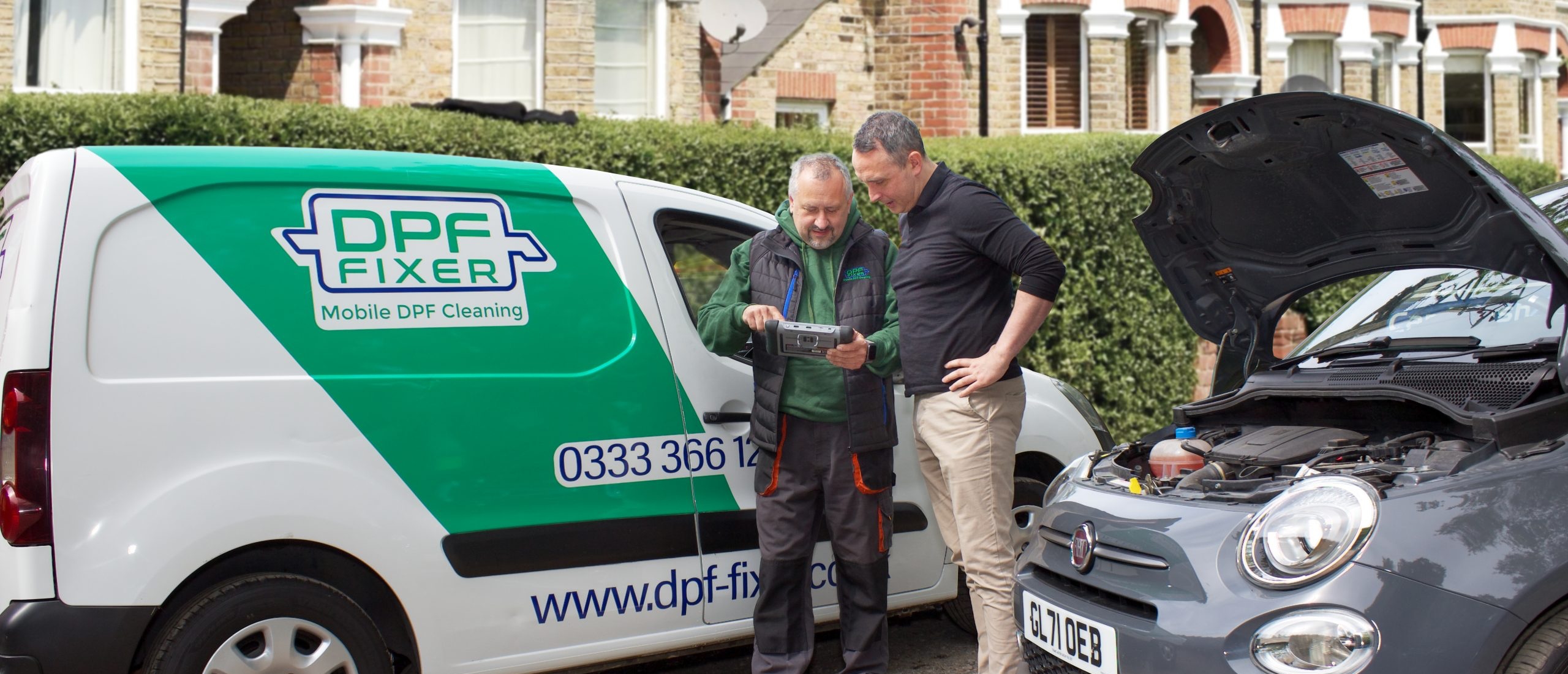
Your DPF fixed at home, no fuss


 DPF warning light?
DPF warning light?
We fix it while you wait
Your DPF fixed - without fuss
Your DPF (Diesel Particulate Filter) cuts harmful pollution. But it can get clogged and stop the engine working properly. If you see a warning light, call us.
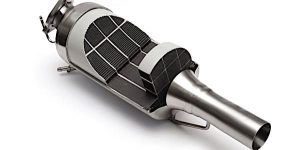 It means your DPF (Diesel Particulate Filter) has a problem. Your engine may go into ‘limp-home’ mode, or stop altogether.
It means your DPF (Diesel Particulate Filter) has a problem. Your engine may go into ‘limp-home’ mode, or stop altogether.
We come to you and fix it.
DPFs collect the soot produced by your diesel engine. After a while they can get full - then they fail.
Our mobile service cleans and regenerates the unit on the spot, to restore full operation.
Most garages prefer to sell you an expensive new DPF unit.
Instead, our technicians use specialist equipment to break down the soot particles, and restore your filter.
The process triggers your engine's "regeneration" procedure to restore healthy operation. Your car will be fine and you can drive on.
A new DPF is expensive - restoration saves you big garage bills.

Call for one of our units now. It’s all done within an hour.
 The first you’ll know about DPF failure is an engine warning light. Your car will probably go into ‘limp-home’ mode.
The first you’ll know about DPF failure is an engine warning light. Your car will probably go into ‘limp-home’ mode.
We come to you and carry out the full cleaning/regeneration procedure – without removing anything from your car.
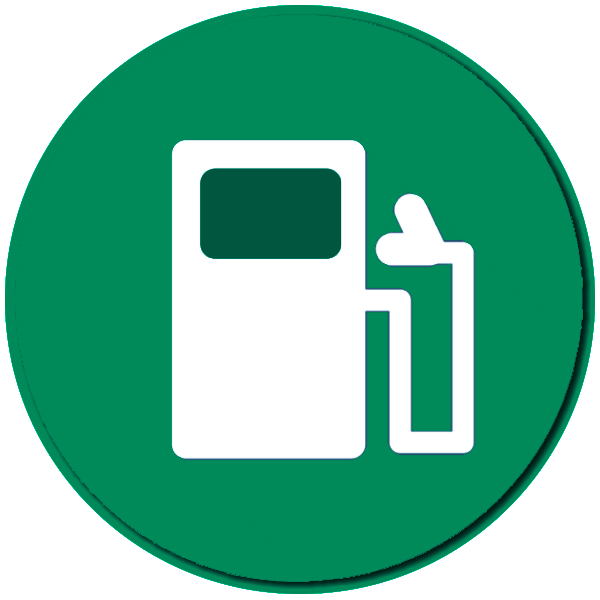 Once the cleaning is complete, our technician resets your engine management system, to clear the warning light and restore normal driving.
Once the cleaning is complete, our technician resets your engine management system, to clear the warning light and restore normal driving.
Many owners report the service improves engine performance and economy.
🟠 Restores flow, even if your DPF is completely blocked
🟠 Improves fuel economy
🟠 Reduces soot and exhaust gas emissions
🟠 Maintains higher engine performance
🟠 No DPF removal necessary - our technician does the job right on the spot
🟠 Restores flow, even if your DPF is completely blocked
🟠 Improves fuel economy
🟠 Reduces soot and exhaust gas emissions
🟠 Maintains higher engine performance
🟠 No DPF removal necessary - our technician does the job right on the spot

With no soot in the DPF, improved airflow means the engine can breathe better and return improved performance and ecnomy
If you have any questions please call us, or fill in the form if outside office hours.
Common questions
Answer: Diesel engines are efficient, but without modern filters they are dirty – they create sooty particulates that are bad for health. Your Diesel Particulate Filter (DPF) removes those by pushing exhaust gases through a maze of metal channels, collecting the sooty particulates.
Answer: If you have an engine management light on, the problem needs to be fixed – even if the light goes off from time to time. The light means the engine is not working properly. Sometimes, engine management systems will put your car in “limp” mode after a fault is detected. That usually doesn’t change till the fault is cleared. You may be able to get home, but until the problem is fixed your car is not really useable. This used to mean replacing the DPF unit – fortunately it can now be effectively cleaned without removal.
Answer: DPFs usually cost a few hundred pounds, even for “pattern” parts. For a branded replacement, fitted in a main dealership, don’t be surprised at a bill of £2500 or more. It’s just not worth it for such dealerships to invest in the equipment needed for DPF cleaning.
Answer: With the engine running at 2000 rpm, we apply the cleaning restorer in 3 short bursts, and wait for it to take effect. If necessary, we then repeat the cleaning process a second time to remove any stubborn carbon remnants.
At that point the vehicle is ready for a road test to make sure the engine’s ability to carry out passive regeneration is restored – that’s what will keep the DPF clean in the future.
Answer: With the engine running at 2000 rpm, we apply the cleaning restorer in 3 short bursts, and wait for it to take effect. We then repeat the cleaning process a second time to remove any stubborn carbon remnants.
At that point the vehicle is ready for a road test to make sure the engine’s ability to carry out passive regeneration is restored – that’s what will keep the DPF clean in the future. We’ll also put a cleaning additive into your fuel tank to help with further cleaning as you drive.
Answer: Our engineer will also want to explain – briefly – how the DPF problem arose. In the vast majority of cases it is simply that the car is used for many short runs, so it never gets to proper operating temperature. So at least once a week it’s good idea to let it properly stretch its legs. There are also additives that can help, and our engineer will explain those.
We do have to warn you, though, that if the car is only used for short runs it is only a matter of time before you see the same warning light appear.

